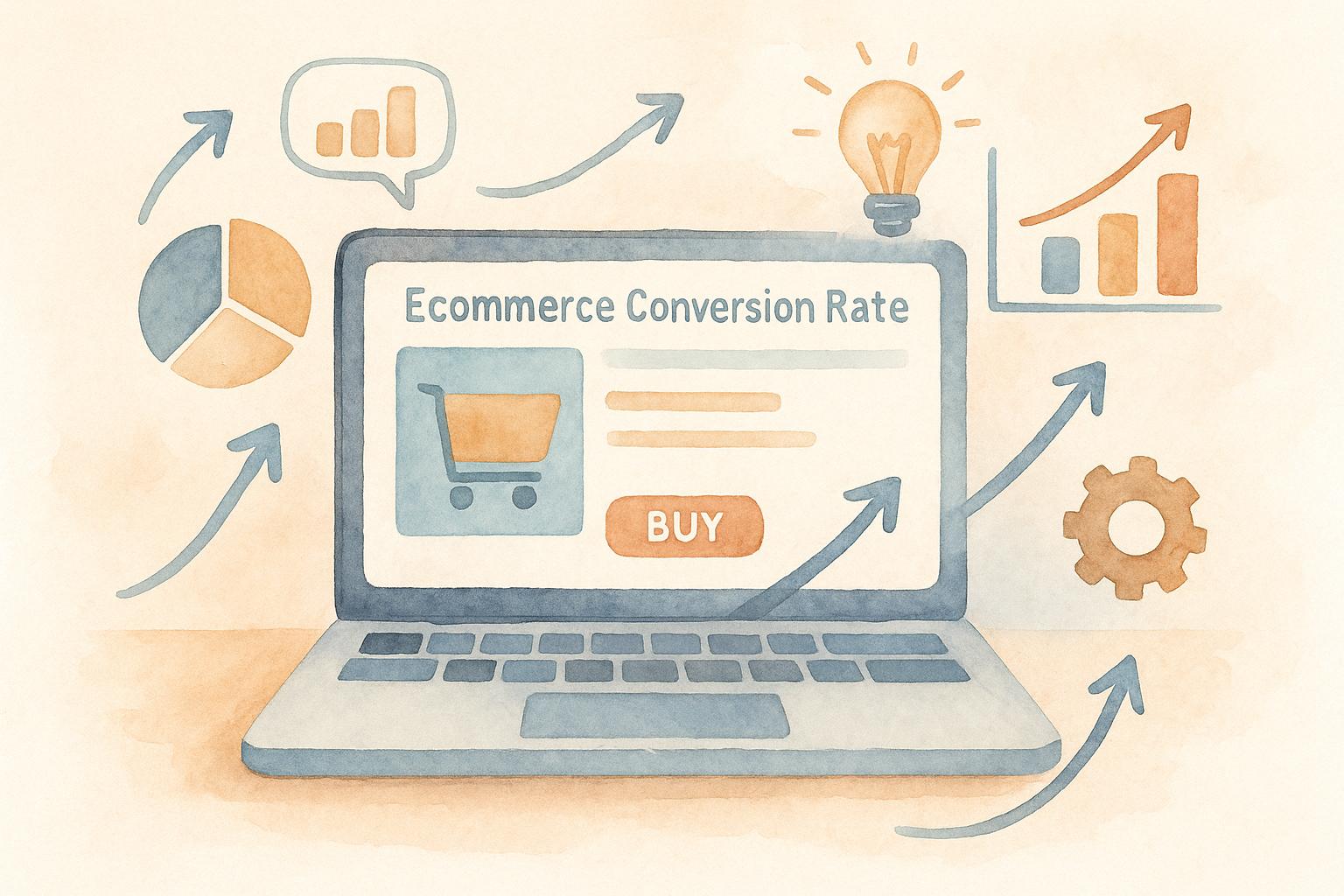Seasonal repeat purchase strategies help businesses turn one-time holiday shoppers into loyal customers, boosting revenue and retention. This guide focuses on using data, customer insights, and tailored campaigns to maximize seasonal opportunities. Key takeaways include:
Data-Driven Planning: Use past sales, customer behavior, and product performance data to predict demand and refine campaigns.
Targeted Promotions: Align offers with seasonal trends, test timing, and personalize for shopper segments like first-time buyers or high-value customers.
Customer Retention Tactics: Use follow-up emails, loyalty rewards, and AI-driven personalization to encourage repeat purchases.
Campaign Tracking: Measure metrics like repurchase rates, profit margins, and multi-channel performance to improve future strategies.
These methods help businesses plan better, manage inventory, and increase profits during peak shopping seasons.
Beyond Black Friday | Building a Year-Round Customer Engagement Strategy
Campaign Planning Steps
Seasonal campaigns need thoughtful planning and smart use of data to drive repeat purchases. Here's how businesses can effectively prepare for peak shopping seasons.
Using Data to Plan Campaigns
Historical sales data is key to understanding seasonal demand trends. A growth audit can highlight opportunities and identify challenges in your seasonal strategies.
Here are three vital data sources to consider:
Data Type | Key Metrics | Strategic Use |
|---|---|---|
Purchase History | Average order value, purchase frequency | Pinpoints high-value customer groups |
Product Performance | Seasonal sell-through rates, margin contribution | Helps with inventory and promotional planning |
Customer Behavior | Browse-to-buy ratio, cart abandonment | Refines targeting and messaging strategies |
By analyzing this data, you can tailor your promotions to align with natural buying patterns.
Matching Promotions to Seasons
Timing is everything. Successful companies align their promotions with peak demand periods by leveraging past successes and demand patterns.
Key strategies for seasonal promotion alignment include:
Pre-season Testing: Test small promotions 4–6 weeks before the main season.
Demand Forecasting: Use past data to anticipate inventory requirements.
Competitive Timing: Schedule major promotions around popular shopping dates.
Weather Considerations: Adapt timing based on local climate trends.
Once the timing is set, the next step is managing your campaign budget effectively.
Setting Campaign Budgets
Your budget should align with goals like acquiring new customers, retaining existing ones, and maintaining profitability. Use tools like incrementality testing to ensure your spending focuses on the most effective channels and campaigns.
For better budget management:
Keep an eye on product category margins.
Analyze performance of different customer cohorts.
Ensure spending aligns with customer lifetime value.
Adjust budgets based on real-time performance data.
This structured approach ensures your seasonal campaigns are not only effective but also profitable, setting the stage for growth during peak shopping periods.
Customer Groups and Personalization
Grouping Seasonal Shoppers
By studying purchase patterns, businesses can design campaigns tailored to different customer segments. Here’s a breakdown of seasonal shopper types and how to connect with them:
Shopper Type | Characteristics | Targeting Strategy |
|---|---|---|
First-Time Holiday Buyers | Make one-time, gift-focused purchases | Early-season reminders, curated gift guides |
Regular Seasonal Shoppers | Shop consistently each year | VIP previews, exclusive early access |
High-Value Customers | Place large orders across various categories | Premium rewards, personalized services |
Gift Purchasers | Send orders to multiple addresses | Gift wrapping options, bundled offers |
Using technology, these segments can be refined even further for more precise targeting.
AI-Powered Personal Offers
Once customer segments are defined, AI can help craft personalized offers for each group. Here’s how:
Historical Data Analysis: Use past purchase data to send timely reorder reminders.
Automated Messaging: Trigger messages based on browsing habits or cart abandonment.
Dynamic Pricing: Adjust discounts based on a customer’s value and purchase history.
This approach ensures customers receive offers that feel tailored to their needs.
Multi-Level Rewards
Tiered rewards programs encourage higher spending and build loyalty. A well-designed program should match natural buying habits and provide meaningful perks at every level.
Tier Level | Spending Threshold | Benefits |
|---|---|---|
Bronze | $0–$250 | Seasonal discounts, early access offers |
Silver | $251–$750 | Free shipping, double points on purchases |
Gold | $751+ | VIP service, access to exclusive products |
Incorporate these rewards into seasonal campaigns to strengthen customer relationships and keep them engaged.
Running Seasonal Campaigns
Once you've planned your campaigns and identified your customer segments, the next step is to roll out targeted seasonal campaigns that resonate with your audience.
Limited-Time Sales
Using limited-time offers is a great way to create urgency and encourage quick purchasing decisions. These short-term deals not only boost immediate sales but also tap into seasonal demand, aligning with natural buying patterns.
After-Purchase Follow-up
After the sale, following up with customers helps build stronger relationships. Consider setting up an automated email sequence that includes:
Order Confirmation: Provide purchase details and tracking information.
Usage Tips: Share simple tips to help customers get the most out of their purchase.
Feedback Request: Ask for feedback through a quick survey.
Product Suggestions: Recommend items that complement their purchase.
Encourage customers to share their experiences by hosting themed photo contests, offering incentives for product reviews, or running social media campaigns. These efforts can deepen connections and keep your brand top of mind.
Location and Weather Targeting
To make your campaigns even more relevant, tailor your offers based on local conditions. Use location data and weather trends to craft promotions that feel timely and personal. For example, a winter jacket sale during a snowstorm or a sunscreen discount during a heatwave can drive immediate action and engagement.
Tracking Results and Updates
Key Performance Metrics
To gauge the success of your seasonal campaigns, focus on metrics that highlight both immediate outcomes and long-term benefits. These indicators should directly relate to profitability and customer loyalty.
Here are some key metrics to track:
Seasonal Repurchase Rate: The percentage of customers who make repeat seasonal purchases.
Customer Cohort Performance: Insights into how different customer groups respond to seasonal promotions.
Promotion Margin Impact: How seasonal discounts influence overall profit margins.
Product-Level Profitability: Which seasonal items generate the most profit.
By keeping an eye on product-level performance, you can allocate resources more effectively and spot trends for future seasonal opportunities. Once these metrics are in place, understanding customer journeys across multiple channels becomes crucial.
Multi-Channel Purchase Tracking
Building on campaign planning, tracking across channels helps pinpoint which strategies encourage repeat seasonal purchases. A thorough approach to channel tracking reveals how aligning touchpoints can boost customer retention.
To improve your multi-channel tracking efforts, focus on the following:
Connect Customer Journeys: Link touchpoints across email, social media, and your website.
Measure Channel Attribution: Determine which platforms are driving repeat seasonal purchases.
Monitor Cross-Channel Behavior: Observe how customers interact with multiple channels before completing purchases.
"The guidance we got was practical and straightforward. We've expanded faster than we imagined, thanks to their no-nonsense approach."
Alison, Managing Director, Atlas Growers
After mapping the customer journey, ongoing testing can further refine your campaigns for better results.
Testing and Improvement
Regular testing is essential to fine-tune seasonal campaigns. By experimenting and analyzing results, you can uncover incremental improvements in key areas:
Offer Timing: Experiment with different launch dates and promotion durations.
Pricing Strategies: Test various discount levels and bundled offers.
Message Variations: Try different seasonal messaging and creative designs.
Customer Segmentation: Adjust targeting based on seasonal buying patterns.
To ensure continuous improvement, conduct regular business health checks and review your profit and loss analysis to account for seasonal trends. This helps identify which strategies yield the best results and deserve more focus in future campaigns.
Conclusion
To boost seasonal repeat purchases, you need a system that's driven by data and centered on your customers. Research shows that well-executed strategies can lead to impressive revenue growth and conversion rates.
Three key factors make seasonal strategies work: targeting the right customers, running operations efficiently, and consistently tracking performance. A data-focused plan is essential for achieving consistent growth.
Prioritize actions like launching high-margin seasonal products, offering pre-sale discounts to manage cash flow, conducting in-depth customer research, and staying in tune with market trends.
The goal of seasonal strategies is to create strong customer connections that lead to steady, profitable growth. Use these methods to foster loyalty and ensure your seasonal campaigns deliver results year after year.
FAQs
How can businesses use customer segmentation to boost seasonal repeat purchases?
Customer segmentation allows businesses to tailor their seasonal marketing strategies to specific groups of customers, enhancing the likelihood of repeat purchases. By dividing customers into segments based on factors like purchase history, demographics, or behavior, businesses can create targeted campaigns that resonate with each group.
For example, you can offer exclusive discounts to loyal customers or recommend complementary products to those who’ve made specific purchases in the past. Personalized offers and messages not only increase customer engagement but also build stronger relationships, encouraging repeat business during seasonal periods.
What key metrics should I track to measure the success of seasonal campaigns, and how can they help refine future strategies?
To measure the success of seasonal campaigns, focus on tracking Customer Acquisition Cost (CAC), Lifetime Value (LTV), and the CAC-to-LTV ratio. Additionally, analyze cohort profitability and compare behaviors of first-time versus returning customers. These metrics provide valuable insights into how specific products contribute to profit, which acquisition channels are most effective, and how customer habits evolve over time.
By using this data, you can identify opportunities to optimize marketing spend, improve retention strategies, and enhance overall campaign efficiency. This ensures future seasonal campaigns are more targeted, cost-effective, and aligned with customer needs.
How can businesses use AI-driven personalization to boost customer retention during peak shopping seasons?
Businesses can use AI-driven personalization to enhance customer retention during peak shopping seasons by creating highly tailored shopping experiences. This involves analyzing customer behavior and preferences to recommend products, personalize promotions, and optimize communication timing.
Key strategies include focusing on high-value customer segments, promoting profitable products, and addressing customer needs in real time. By leveraging AI insights, businesses can build stronger connections with their audience, encouraging repeat purchases and long-term loyalty.



